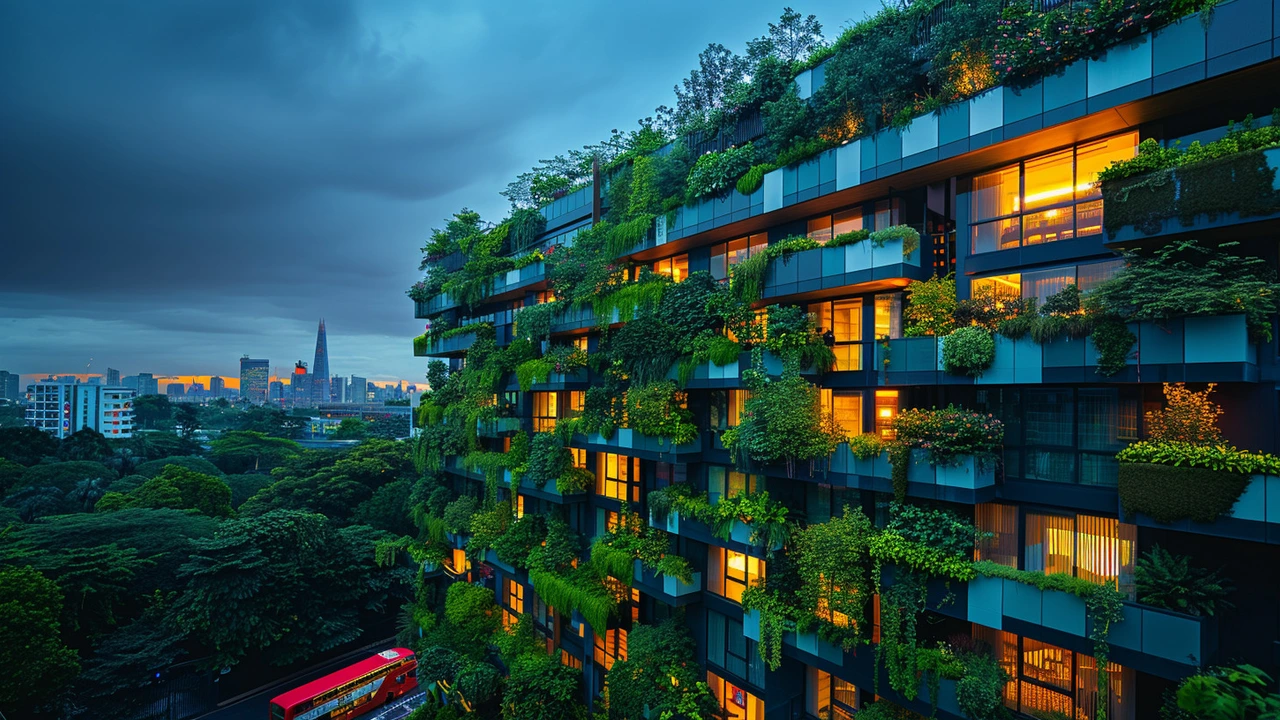This article explores how constructivist architecture plays a crucial role in the realm of sustainable design. By integrating eco-friendly principles with innovative building techniques, this style not only promotes environmental responsibility but also enhances aesthetic and functional aspects. Dive into the essential elements, benefits, and real-world examples of constructivist architecture contributing to a greener future.
Eco-Friendly Building: Practical Guide for Greener Homes and Projects
Want a building that costs less to run, feels healthier, and leaves a smaller footprint? Eco-friendly building isn't just a trend—it's smart design that saves money and the planet. This guide gives clear, usable ideas you can use whether you're remodeling a house or planning a new project.
Design Choices that Matter
Start with orientation and passive design. Place windows to catch winter sun and avoid harsh summer heat. Insulate well—good insulation cuts energy bills fast. Choose airtight construction and add controlled ventilation to keep fresh air without wasting heat. Think compact layouts; less space means fewer resources and lower heating and cooling costs.
Materials, Energy, and Costs
Pick durable, low-toxicity materials. Wood from certified forests, recycled metal, and natural fiber insulation reduce environmental impact. For interiors, choose paints and finishes with low VOCs to improve indoor air. Install efficient windows and a cool roof to reduce heat gain.
On energy, start with efficiency: LED lighting, Energy Star appliances, and smart thermostats give big savings. Add renewable energy like solar panels when you can; even a small system lowers bills and carbon. Consider heat pumps for heating and cooling—modern models are efficient and can replace gas systems.
Water matters too. Fit low-flow fixtures, capture rainwater for gardens, and design with drought-tolerant landscaping to cut outdoor water use. When plumbing is grouped, you save materials and reduce heat loss in hot water lines.
Budget-wise, focus first on measures that pay back quickly: insulation, sealing, efficient appliances, and LED lighting. Green choices that last—like durable cladding or solar—are investments. Look for local rebates, tax credits, and financing for energy upgrades. They can make big projects affordable.
Small actions add up. Planting trees for shade, shading windows with awnings, and using light-colored exterior paints lower cooling needs. Reuse and adapt existing structures when possible; retrofits often use fewer resources than building new.
If you want easy wins, start with an energy audit. Many utilities offer free or low-cost audits that point out leaks, inefficient systems, and quick fixes. Document current usage, set realistic goals, and phase upgrades to match your budget. For renovations, ask contractors about life-cycle costs rather than just upfront price—they'll show longer-term savings. Join local green-building groups or online forums to learn from others' projects and avoid costly mistakes.
Finally, measure and monitor. Use simple energy monitors and check utility bills before and after upgrades. That shows what works and where to invest next. Talk to an architect or builder who knows green standards like Passive House or LEED if you want formal certification, but you can apply many eco-friendly ideas without it.
Eco-friendly building blends practical choices and smart planning. Make a list of high-payback fixes, pick healthier materials, and add renewables when the time and budget are right. Little changes add up—your building will cost less to run and feel better to live in.
Small plans, steady progress, and tracking results make green building realistic and rewarding today now.

